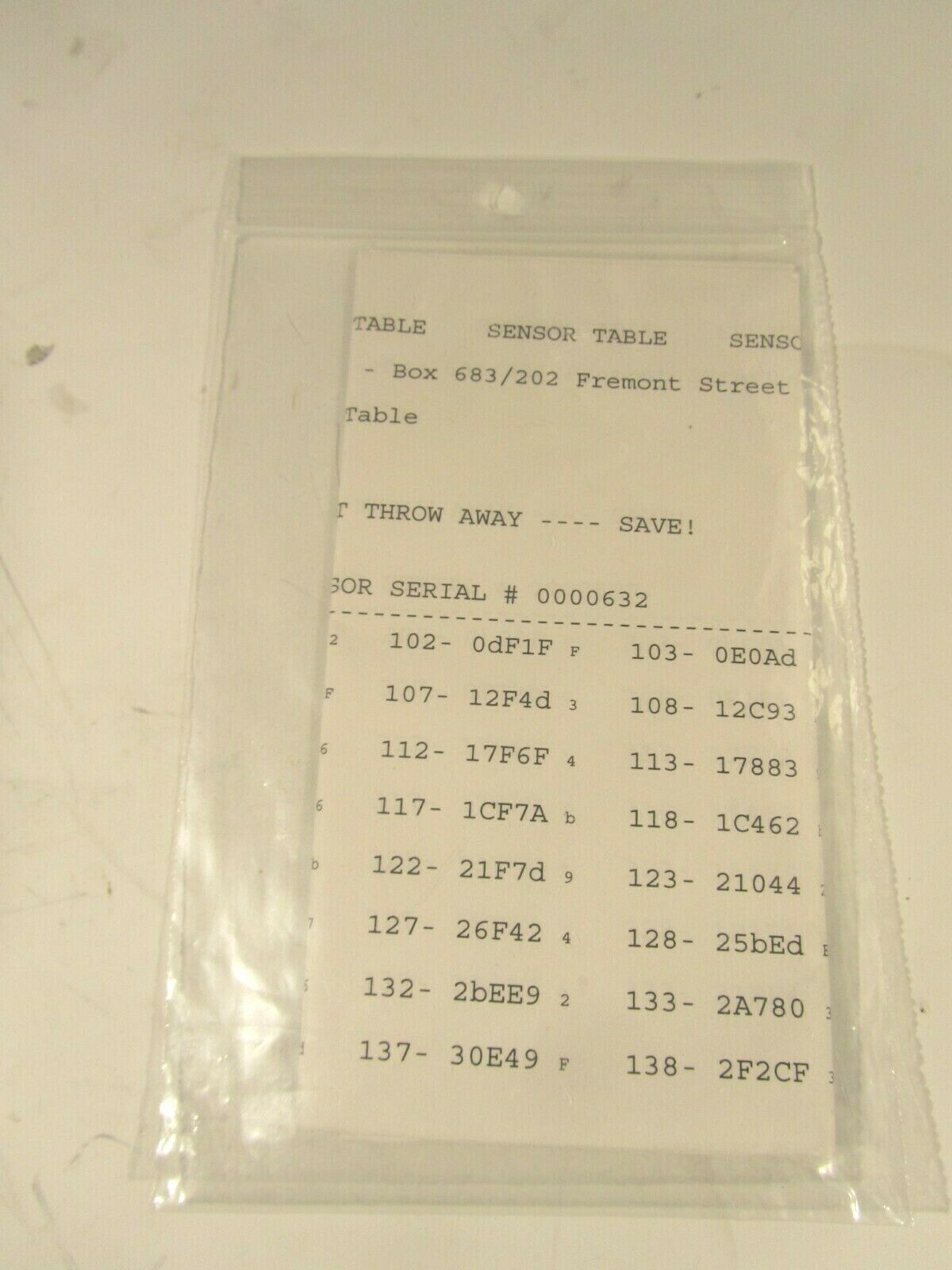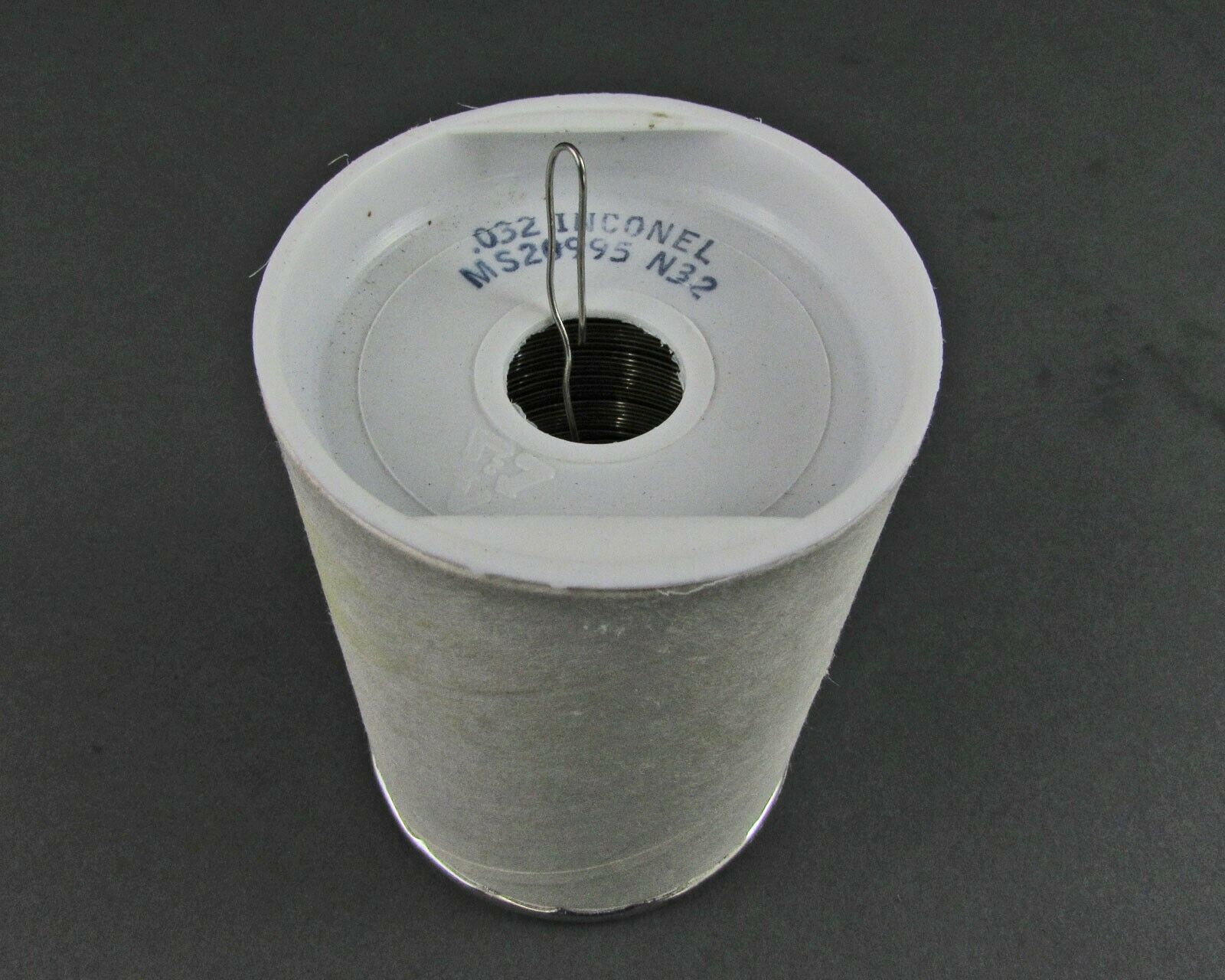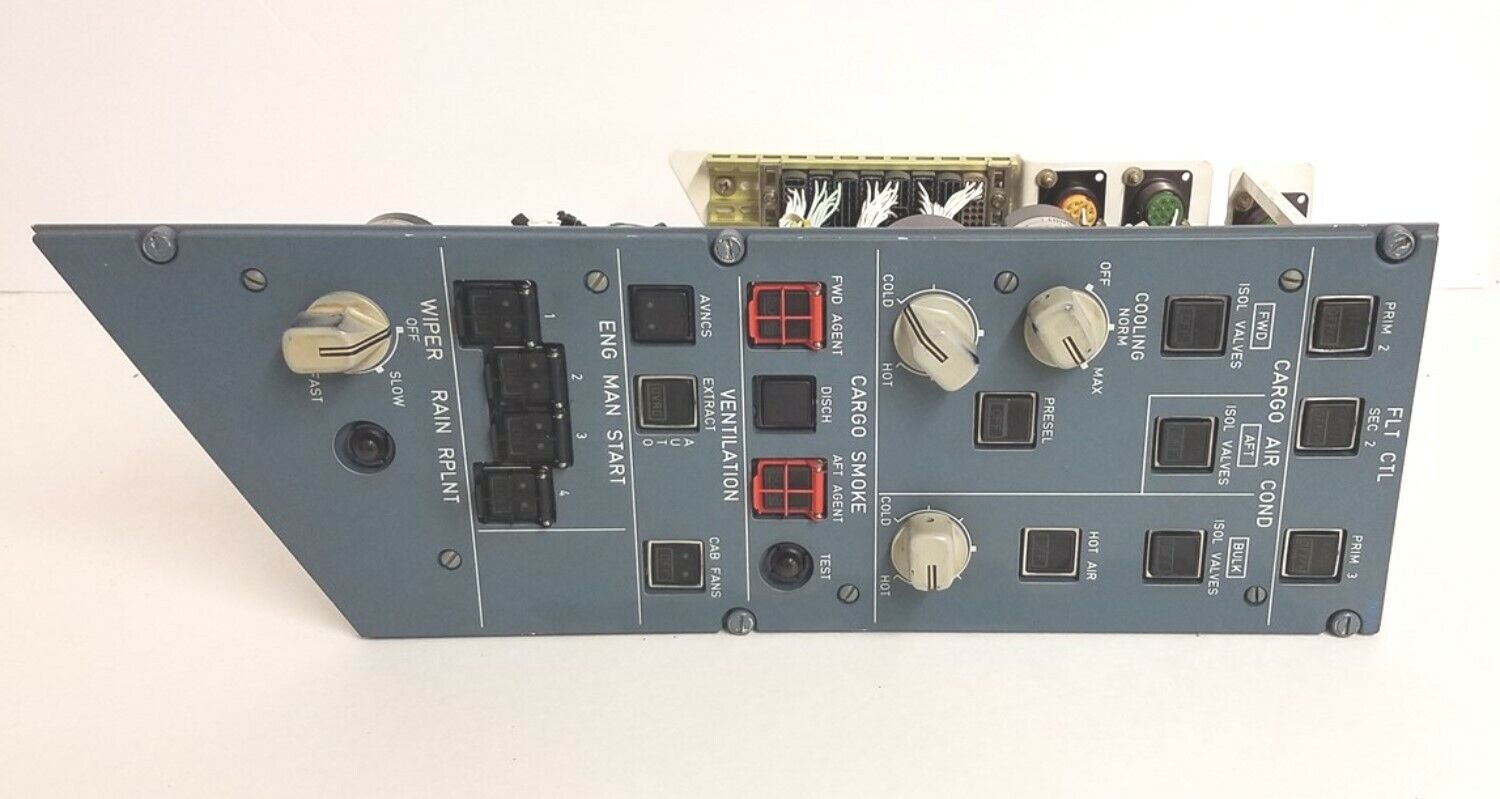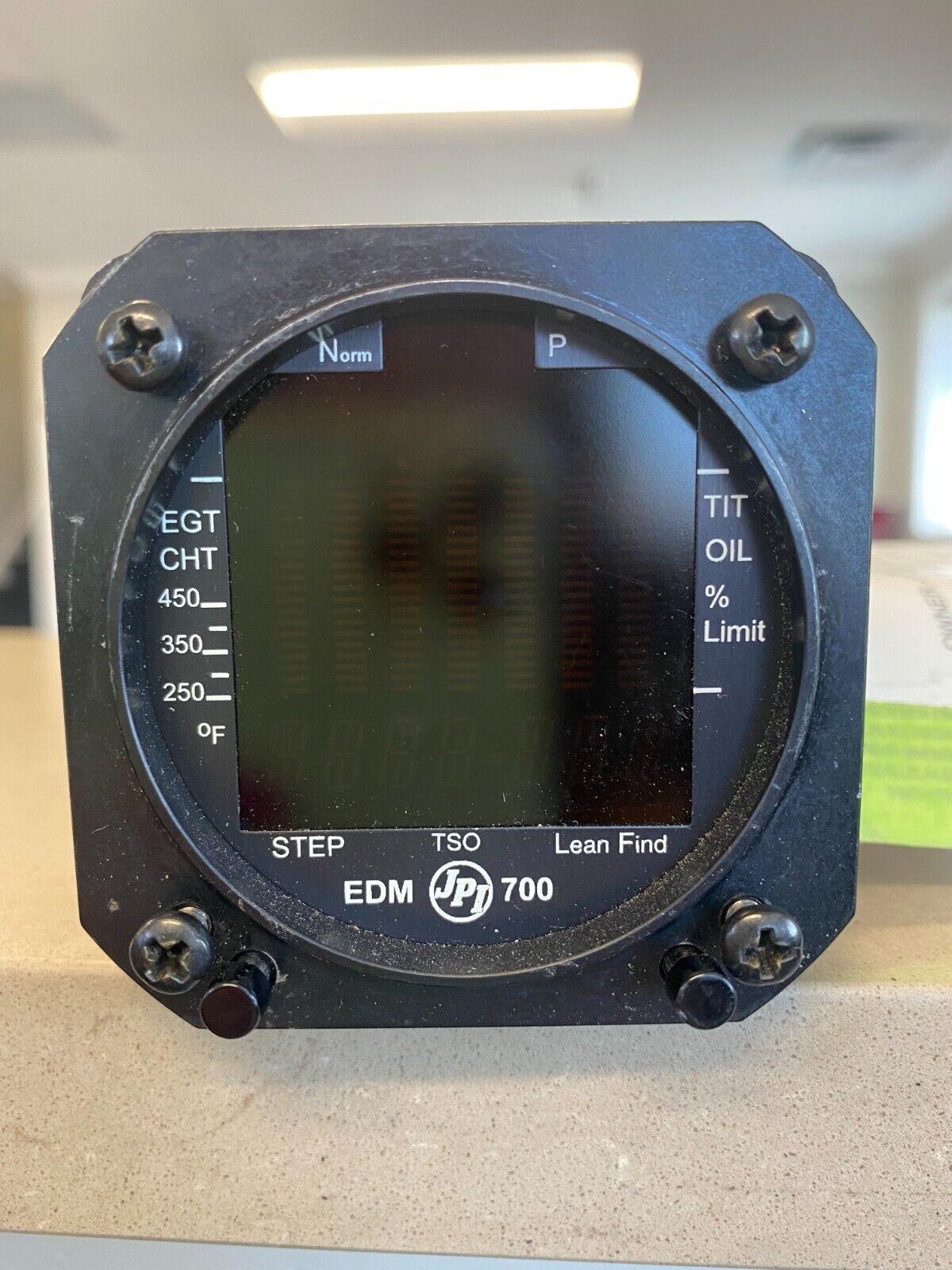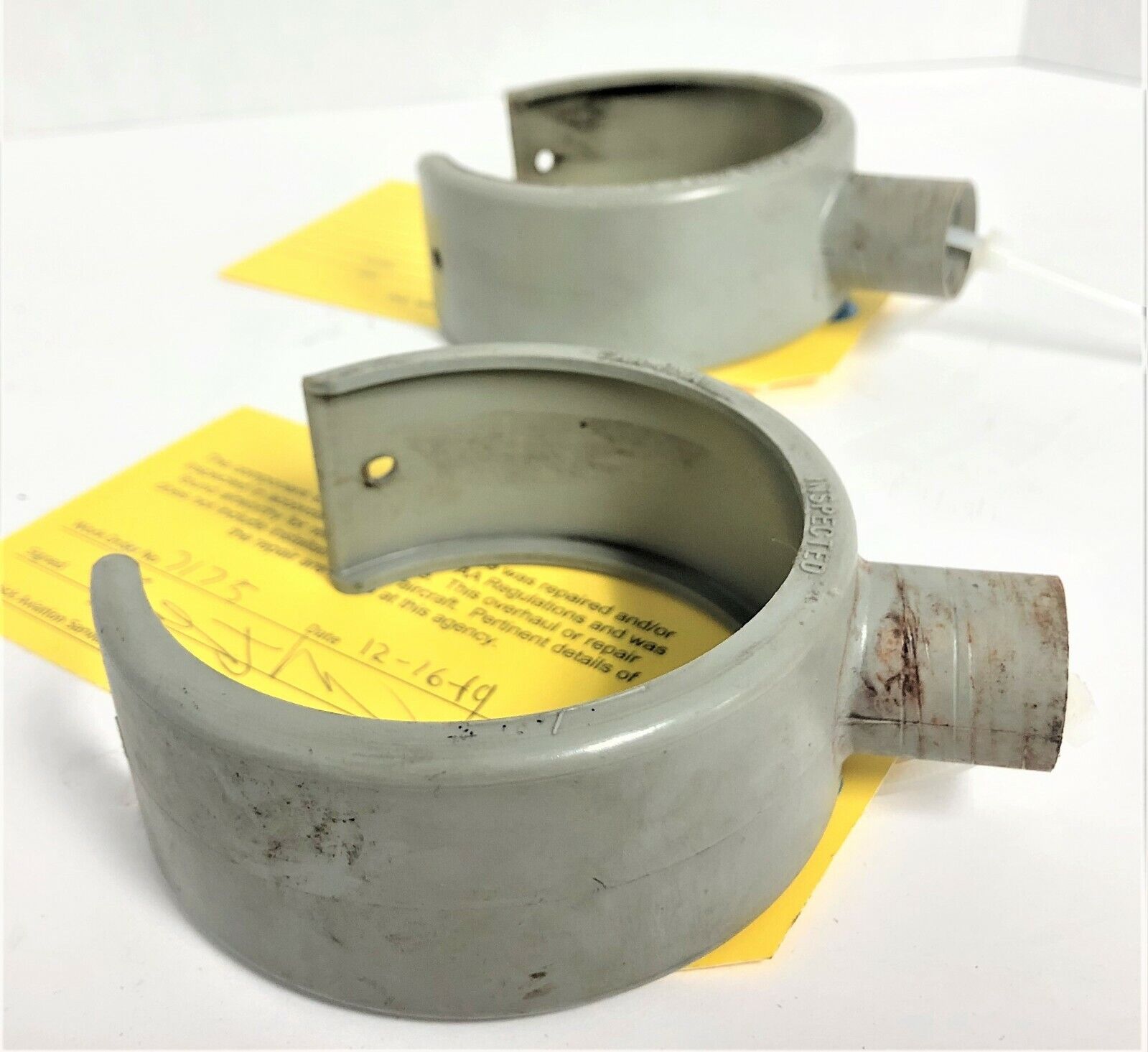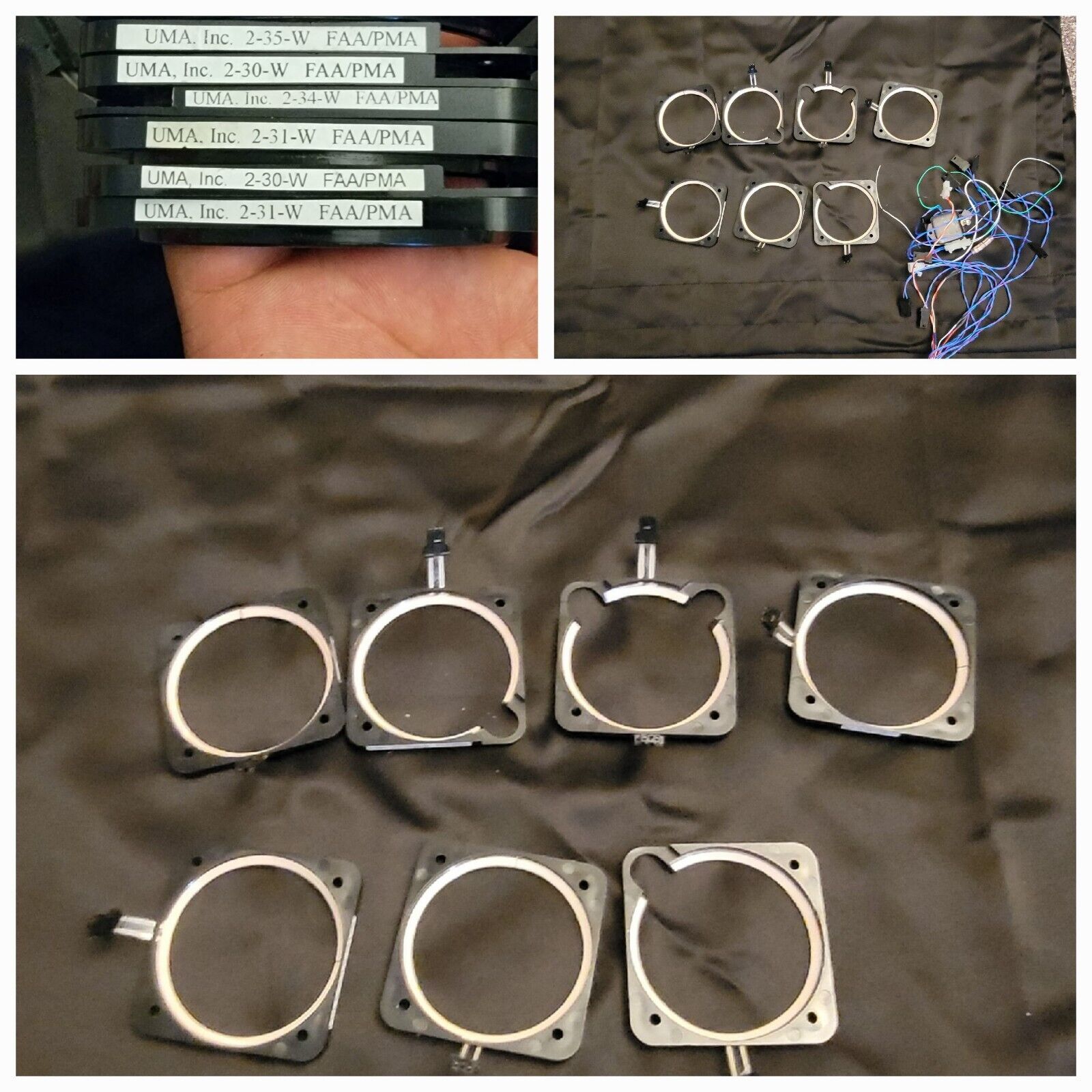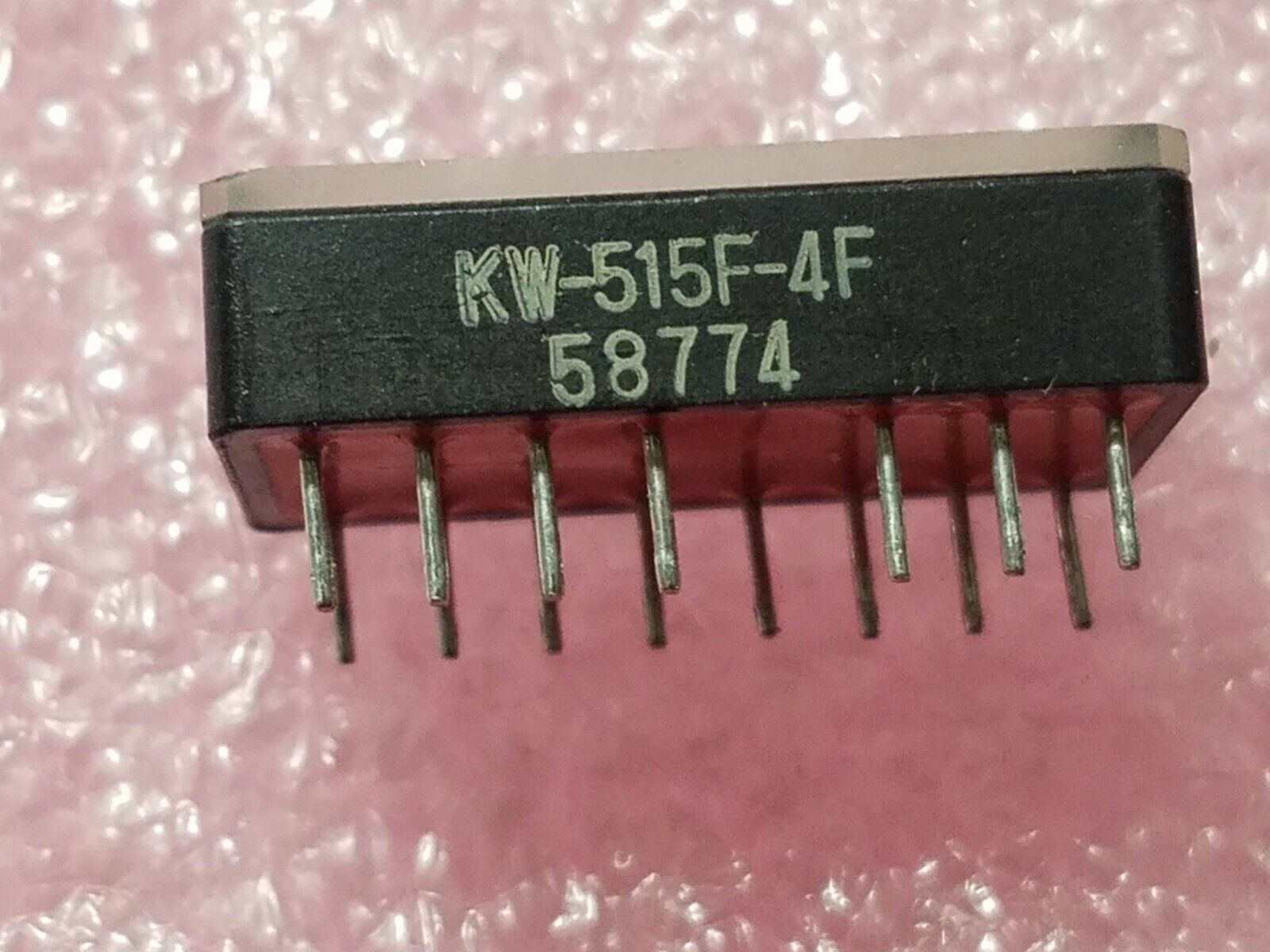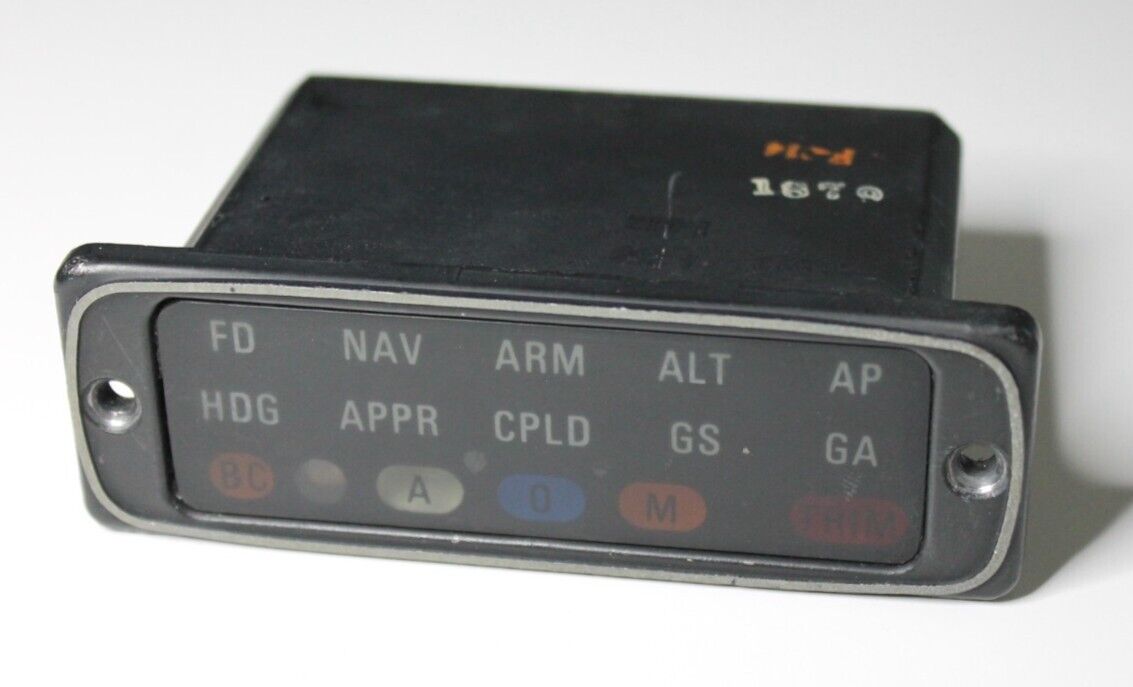-40%
Rocky Mountain Instrument Co. MicroEncoder 202 Computer Based Instrumentation
$ 155.76
- Description
- Size Guide
Description
MicroEncoder brand new in packing box.Pilots love their gadgets. We're always looking for a better way to get the information we need to fly from point A to point B, and we all seem to think we need more and more information to get the job done. All you have to do is take a walk along the flight line at your local airport and look inside the cockpits. You'll see instrument panels packed with gauges and dials, and you'll even see some black boxes that have overflowed the panel and are strapped to side panels and between seats.
Yes, unfortunately, panel space is limited, especially in many sport aircraft. That's why the trend is for instrument and avionics manufacturers to develop a gadget that will take the place of several -- so we will have the room for new things when they come out. The problem, though, is these multi-function instruments often don't work as well as did the several separate instruments they replaced.
That's why I was a little skeptical when I received the Micro-Encoder from Rocky Mountain Instrument. The little gizmo was supposed to perform all the duties of the airspeed indicator, vertical speed indicator, altimeter, mode C altitude encoder, and outside air temperature gauge. The installation manual said the best thing to do was to take out the old VSI and put the RMI Micro-Encoder in that 3 1/8-inch hole.
I took the new RMI gadget to a friend and avionics expert Jeff McDonald, owner of Mac Avionics at Lakeland Regional Airport, and told him I didn't feel comfortable using the new device to replace anything. I'm not one of the lucky (and wealthy) guys that has a stacked stack and gadgets galore. My panel doeth not runneth over, so room wasn't a problem. And Jeff said it wouldn't really be any more difficult to install it as a separate unit rather than as a replacement.
This was the first Micro-Encoder the folks at Mac had installed, and it took them a full day to tap into the static and pitot lines, run the wires, cut the panel hole and test everything out. Since this instrument provides so much information, there are quite a few connections for the avionics shop technicians to make.
As soon as the installation was complete, I grabbed the manual to see if I could understand how to use it. The manual was fairly easy to understand, and you'll probably need to read it to get the most from your unit. You can let the avionics shop pre-set defaults to your airplane's operating limitations, as Mac did for me, and you'd never have to open the book. But if you do that, you'll be cheating yourself of many of the Micro-Encoder's features. For example, you (or the avionics technician) will need to pre-set whether you want the altitude setting to be in inches of mercury or in millibars and whether you want the readout to be in 1-foot or 10-foot increments. Mine is set to read in inches and 10-foot increments. You'll also need to set the warnings to flash and/or sound off audibly at critical V-speeds, like Vne or flaps and noflaps stall speeds. And you'll need to set certain limits, such as the VSI maximum range from 1,000 to 6,000 fpm.
The face of the RMI Micro-Encoder has two toggle switches and a round knob at the bottom. The liquid crystal display screen has three digits at the top for either true or indicated airspeed, and immediately to the right of those numbers are arrows up and down that will indicate whether your speed is increasing or decreasing. Below that are five digits for altitude. (If you need more than five digits for your altitude, please send us photos of your homebuilt!) At the bottom is the readout for the altimeter setting and the outside air temperature. To the right side are four digits for the vertical speed reading. Above and below the digital VSI readout are arrow shaped bars that tell you which direction you're traveling, up or down, at the speed indicated in the center.
Using the toggle switches or the knob, or combinations of them, you can set your defaults, alternate between indicated altitude, pressure altitude and density altitude, switch from Fahrenheit to Celsius temperature readings, or turn the airspeed indicator from knots to mach speeds. Ever wonder how fast your Taylorcraft goes in mach numbers? Just flip the switch.
Let's take a look at each of the features of this remarkable little device:
Vertical speed indicator:
The VSI feature can be programmed in sensitivity to match the performance of your airplane. In other words, if your airplane huffs and puffs to climb at 500 fpm, you'd set the Micro-Encoder differently than you would in a 2,000 fpm rocket ship. Each segment of the upward-pointing and downward-pointing bar graph represents a different value, with the segments toward the center being the most sensitive. For example, if the graph goes up one segment, it may indicate 20 fpm. The second notch would indicate another 70 fpm, and the third notch may mean 120 fpm more -- and so forth.
If you're going up or down at a rate of more than 9,990 fpm, the VSI digits will start blinking at you. But don't worry. If you're going up at a rate faster than that, you'll probably be getting all the information you need from Mission Control in Houston.
In its operating manual, RMI warns that, for IFR flight, the Micro-Encoder should be used to replace only the aircraft's VSI. They don't want to see airplane owners taking out the airspeed indicator, altimeter and every thing else and rely solely on the Micro-Encoder.
Thermometer:
You will receive a continuous reading of the outside air temperature anywhere from -50 C to +99 C. The RMI instrument uses this information and airspeed data to calculate true air temperature, correcting indicated temperature for the extra heat created by the airplane's speed. All you have to do is press a toggle switch down to read the true airspeed.
Airspeed indicator:
As mentioned earlier, this readout is either in knots or mach, your choice, and the range is from 30 to 473 knots. You can toggle between indicated airspeed and true airspeed, which the microprocessor calculates with the temperature data. (Remember those agonizing calculations during ground school?)
You or your avionics shop will have to set several defaults specific to your airplane. These defaults are used to give you warnings that you're about to drop out of the sky or rip your landing gear off. You'll set the high stall limit that represents the bottom of the green are on the ASI, the low stall limit that represents the bottom of the white are, the safe flap extension speed and the safe gear extension speed for RG aircraft. You'll also set Vno, maximum structural cruising speed, and Vne, the never exceed speed.
Altimeter:
The altimeter's range is more than adequate for any general aviation use, since it has a range of -2,000 feet to +46,000 feet. That range conjures up some interesting pictures. I'd like to see the guy who flew to the lower limit and lived to tell about it. Here again, you have options of setting the defaults in either inches of mercury or millibars. Of course, since ATIS stations and most airports report altimeter settings in inches of mercury, that's the pre-set factory default. You can also set the altimeter to read in 1-foot or 10-foot increments. ATC ain't gonna bust you for being only 10 feet off altitude, and seeing the numbers hopping around like hot popcorn can be distracting, so the factory-set default is 10 feet increments.
Pushing one of the toggle switches down will combine the indicated altitude information with the altimeter setting to give you pressure altitude. Pushing the same switch up will throw in the temperature to display density altitude. This is one of the most interesting features of the Micro-Encoder. I don't know of too many pilots who continually calculate their density altitude to monitor their airplane's performance while flying from point A to point B. I was recently cruising along on a warm but not hot day here in Florida. I was flying at 6,500 feet and flipped the switch to density altitude. In a split second, I learned the density altitude was more than 10,000 feet! This little gizmo really takes the work out of calculating aircraft performance.
Another one of the beauties of this thing is that it will give you the actual altitude reading the mode C encoder is sending through your transponder to the local TCA or ARSA -- rounded off to the nearest 100 feet. If you've busted your assigned altitude, you're going to know about it even before you land and get a call From the tower.
Altitude alert:
This feature has three modes: converge, hold and approach. "Converge" gives you a warning when you're getting close to one of the alert altitudes you've set; "hold" gives you a warning either through flashing numbers or an audible tone while maintaining an alert altitude; and "approach" will warn you when you're getting close to decision altitude during an instrument approach.
You can select the number of feet between the alert altitude and when you want the warning. For example, if ATC assigns you an altitude of 10,000 feet, you may want to set your alert altitudes (when you'll be warned with flashing numbers or a beeping alarm) at 9,900 feet and 10,100 feet. That way, you'll keep the airplane within 100 feet either side of the assigned altitude.
These functions are particularly useful when you're on an instrument flight plan or if you're flying in the congested airspace of an ARSA or TCA.
RS232 port
This serial port allows the Micro-Encoder to be programmed For various baud rates and output formats for it can be connected directly to other equipment such as VNAV loran C units that might need altitude information.
With only three switches on the face, this unit has been designed for simplicity of use. You can have the shop technicians set it up for you, and you'd get lots of information from it without ever touching any of the switches. But spending a little time with the operator's manual will reward you with a wealth of other information. The manual is fairly well written and takes you step-by-step through all the operations. About a half hour with the book will have you waltzing through all the Micro-Encoder's operations.
Since my home base lies in a narrow strip between two TCAs, Tampa and Orlando, I've really fallen in love with the Micro-Encoder. Before the RMI instrument, I had never really felt comfortable that the controllers were reading my altitude the same as I saw it on the altimeter. From checking with controllers from time to time, I figured that my altimeter was usually reading a bit on the high side, so I usually tried to fly 50 to 75 feet above my assigned altitude. I've never gotten into trouble doing it this way. When Mac Avionics installed the RMI Micro-Encoder, they also went over everything else, and now the old analog altimeter is reading right on the button. And it agrees exactly with the RMI digital read-out.
I've also found that the RMI's vertical speed function responds more quickly to aircraft movement than the old VSI -- and the rate of climb or descent is more accurate than the analog unit.
RMI sells the Micro-Encoder either as a kit (9) or a ready-to-install unit (,149). The company estimates 15 to 20 hours assembly time for the kit. Somebody accustomed to this type of assembly, though, should be able to get the job done in far less time.
RMI has always focused mostly on the experimental aircraft market, and this little gadget was designed for the homebuilt arena. Less than 10 percent of RMI's business is in certificated aircraft. This may change in the near future. The company has been working to get all the papers and forms filled out to get the Micro-Encoder TSO'd.
When I had the device installed, I wondered if I'd really use it, since it wasn't really replacing anything in my Cessna. I figured that I'd still rely primarily on the instruments that I had become accustomed to scanning. I was wrong. I now rely more on the Micro-Encoder for altitude information and vertical speed data than I do on the other two instruments. I still rely on the analog airspeed indicator as my primary speed instrument, but even that could change with time.
I've got to admit, though, that this instrument is not going to remain in the panel of my Cessna 172. You see, I'm building a Cozy Mark IV. As soon as the Cozy's panel is ready for instruments, this is going to be planted permanently in the new airplane.
Specifications:
Height 3.2 inches
Width 3.2 inches
Length 7.5 inches behind panel (add 3.5 inches for connectors)
Weight 1.4 pounds
Backlight aviation green EL with intensity control
Display wide temperature range liquid crystal display
Temperature 20C to +55C
Warm-up time 10 seconds to operation 5 minutes to full-rated accuracy
Altitude range -2,000 to +46,000 feet
Encoder range -1,200 to 46,000 feet
Airspeed range 25 to 473 knots
VSI range 0 to 9990 fpm
OAT range -50C to +99C
Voltage 14 to 28 volts DC
Current 150 mA typical, 220 mA max
Audio output 200 mW into 600 ohm load at maximum volume
Compatible transponders:
Bendix TPR-2060, TRP-6G0, TR641-A/B
Cessna RT359A, RT459A, RT859A
Collins TDR-950/950L
Edo-Aire RT-777
Genave Beta 5000
King KT-75, KT-76/78, KT-76A/78A, KT-79, KXP750A
Narco AT5/6, AT-GA, AT-50/50A, AT-150
Radair 250
Terra TRT-250
Wilcox 1014A







